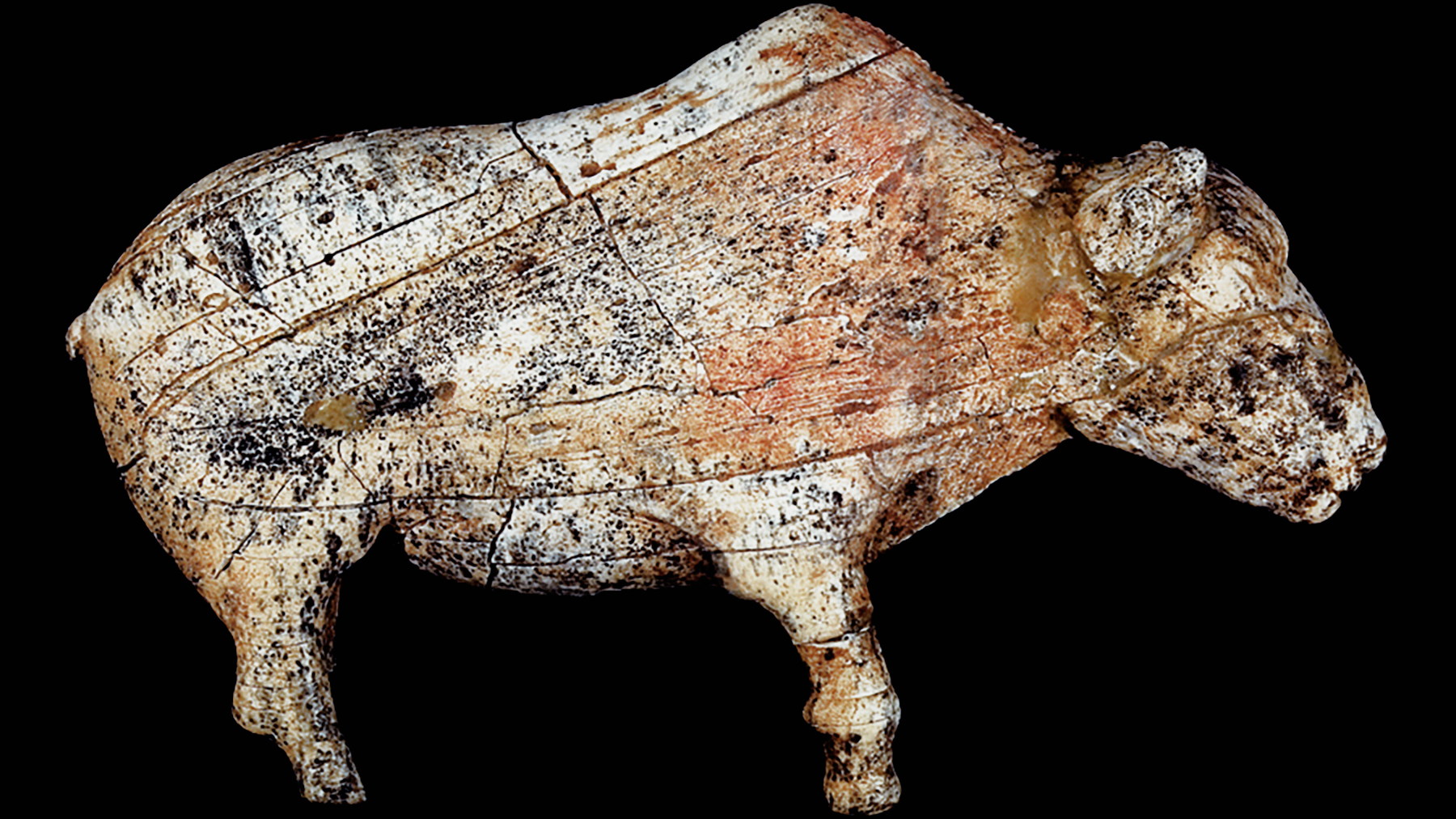



Discovered at Zaraysk, Russia, and dated at roughly 20,000 years, this piece depicts a female bison and was fully sculpted in the round. The shape and taper of the tusk has been used efficiently, capturing the variation of form - between the forequarters and the hindquarters and between the high shoulders and the lower central back - and giving the piece a subtle naturalism and sense of movement. The slight angle of the head from the front view produces the same effect.
Damaging a successful piece that would have taken time and skill to create before burying it is a significant gesture, one charged with symbolism and emotion.
Zaraysk Museum of Art & History, Russia.
Culture which succeeded the Gravettian about 22,000 years ago and lasted until 17,000 years ago in some areas. Identified at the Solutré site in east-central France near Mâcon, and found mostly in France and Spain, the Solutrean is famous for its exquisite flint-knapping.
Source: Dr Jean Clottes